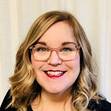Amy Sue Nathan's Blog: Women's Fiction Writers, page 20
January 13, 2016
Author Interview: Best-selling Author Kate Hilton Says If You Want To Write About Women’s Lives, Tell The Truth
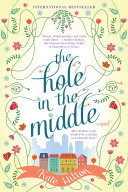 Happy U.S. publication to my friend, Kate Hilton! The Hole In The Middle grew out of questions Kate asked herself about her own life — isn’t that so often the case with women’s fiction authors?
Happy U.S. publication to my friend, Kate Hilton! The Hole In The Middle grew out of questions Kate asked herself about her own life — isn’t that so often the case with women’s fiction authors?
Today Kate shares with us what it’s like to self-publish, have the book picked up by a Canadian publisher, and then sold in the U.S! Plus, some heartfelt advice for writers.
Please welcome Kate to WFW! And share you thoughts about her covers (or anything else) in the comments!
Amy xo
Best-selling Author Kate Hilton Says If You Want To Write About Women’s Lives, Tell The Truth
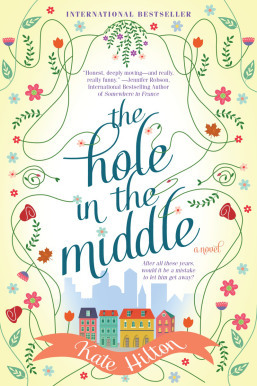 Amy: I’m sure we’re all curious how this book launch has differed from your Canadian book launch, and how you see publishing differing in the two countries.
Amy: I’m sure we’re all curious how this book launch has differed from your Canadian book launch, and how you see publishing differing in the two countries.
Kate: It’s been so different, actually, because the launches happened two years apart! When I published in Canada, I had no idea that The Hole in the Middle would do well. I had already self-published it, and the fact that a traditional publisher (HarperCollins Canada) had bought it was an absolute astonishment to me. I had a big party for all of my friends and family in Toronto. And then, against all odds, the book did really well here, and became a national bestseller, and I did a bunch of media and festival appearances and so on. So by the time my wonderful agent sold the rights in the US (to Penguin Random House), I felt like a real writer and not a complete fraud. This time, I have a network, and a more established online presence, and I feel so much more comfortable in the role. (Of course, all of these comments relate to the world inside my own head, a complicated place not known for its objective reporting.) In terms of the differences in publishing norms between the two countries, my observation so far is that they are fairly similar, at least with respect to commercial fiction.
Amy: I confess. I went to Amazon.ca to see if you had a different cover in Canada! You do! Why do you think your American publisher went a completely different route when the book was a bestseller with that cover? (I love the American cover by the way, it’s very fresh, a little British and whimsical–which might make no sense unless you’re cover-obsessed, like me!) How did you feel about the process (and the result)?
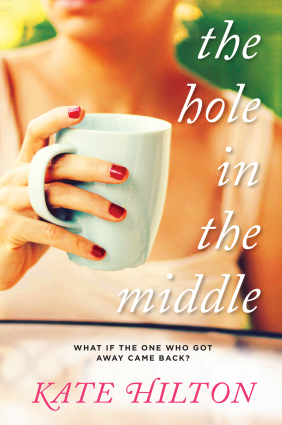
Canadian Cover
Kate: I love the American cover too. It’s my favorite (don’t tell the Canadians). Again, because the Canadian and US versions came out two years apart, I expect that fashions in cover art have shifted. Authors, as you will know, don’t get a lot of say in cover art, and that doesn’t bother me particularly. I have a strong sense of design, but I tend to trust the professionals. My sons, on the other hand, liked my self-published cover, which had a donut on it. They have been fairly underwhelmed by all of the covers since that one. My son’s recent comment on the Canadian cover: “Why does it have a coffee cup? Coffee cups don’t have holes.”
Amy: Your story is about a working mom having it all, or trying to. Do you feel like you have it all? How do you differ from your main character Sophie?
Kate: In The Hole in the Middle, Sophie, the main character, is mired in her own expectations of what it means to be a successful wife, mother, employee, daughter, friend, and woman. The book tracks her journey into a greater self-awareness about her own impossible standards for herself, and how they undermine her essential happiness.
When I was writing the book – I wrote it on Sunday afternoons while working full time – I was trying to resolve these very questions for myself: What does it mean to have it all? Have I achieved it? In hindsight, I can see that I was struggling with a nagging perfectionism that was undermining my sense of self. In the end, I think I came to the conclusion that there isn’t an objective ‘all’ to be had. There have been points in my life when I could have made a list of desirable achievements, and ticked off every box, and still known in my secret heart that I was deeply unhappy. Today, I’d be able to tick fewer boxes on that old list (I’m not married anymore, for starters), but I’m happier than I used to be.
Amy: And that being said, what sparked the idea for this novel? Do you remember the moment you had the idea. Did it start with a person, place, or thing? (Mine always start with a sentence, and I think “Oh my, I need to write that down.”)
Kate: I’d always wanted to be a writer, but until five years ago, I didn’t feel that I had a story to tell. I had worked in several other fields, including law, university administration, publishing and fundraising. Then, just before my 38th birthday, the story arrived in the form of a character, Lil Parker. I couldn’t get her out of my head. Suddenly, she was commenting on everything, and that was the starting point. Once I got Lil to quiet down a bit, the rest of the story took shape, and I began to understand that I wanted to write a book for women in my own generation (Generation X) who were juggling the demands of work and family.
Amy: Without any spoilers, what was your favorite scene to write in the book. Was it one of the hardest scenes to write? One of the easiest?
Kate: The scenes I most enjoy writing are the overtly comic ones. If these scenes don’t make me laugh while I’m writing them, they get revised until they do. Comedy is tricky, because you don’t know if the jokes work until readers begin responding. But I’ve always thought that my own sense of what is funny is the best barometer I have. So, having said that, I had a riot writing the job interview scenes. I hope it shows!
Amy: Do you struggle with the term women’s fiction? (Obviously, I do not.) What does it mean to you?
Kate: I don’t struggle with it. I know that many people do, but I’ve always had a keen interest in women’s issues and I don’t see them as secondary or unimportant – quite the opposite, in fact. I think women’s fiction is a big tent, but what all of the writers associated with the term have in common is a desire to shine light on the lives of women – their unique experiences, their interior lives, and the relationships that define them.
Amy: What’s your best advice for aspiring authors of women’s fiction?
Kate: Tell the truth. Good writing takes courage. If you want to write about women’s lives in a way that resonates with readers, you have to write your truth.
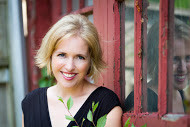 The Hole in the Middle is Kate Hilton’s first novel. Before turning to fiction, Kate worked in law, higher education, public relations and major gift fundraising. She has an English degree from McGill University and a Law degree from the University of Toronto. She is a working mother, a community volunteer, a voracious reader and a pretty decent cook. On good days, she thinks she might have it all. On bad days, she wants a nap. Kate lives with her family in Toronto.
The Hole in the Middle is Kate Hilton’s first novel. Before turning to fiction, Kate worked in law, higher education, public relations and major gift fundraising. She has an English degree from McGill University and a Law degree from the University of Toronto. She is a working mother, a community volunteer, a voracious reader and a pretty decent cook. On good days, she thinks she might have it all. On bad days, she wants a nap. Kate lives with her family in Toronto.
Website: www.katehilton.com
Twitter: @katemhilton
FB: Kate Hilton Author








January 10, 2016
Guest Post: Do Readers Cross The Romance/Women’s Fiction Line? By Laura Drake
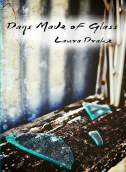 What do my readers want from me? In today’s publishing climate, we’re often afraid to give something new a try, afraid of losing our readers, our followers, our mojo even. Sometimes our publishers are afraid as well, using the word “brand” to help us shape our new books. Staying within genre makes sense, but it’s not always possible. Especially when we have a story we want to tell that falls outside certain industry parameters. (I have a few floating around myself.)
What do my readers want from me? In today’s publishing climate, we’re often afraid to give something new a try, afraid of losing our readers, our followers, our mojo even. Sometimes our publishers are afraid as well, using the word “brand” to help us shape our new books. Staying within genre makes sense, but it’s not always possible. Especially when we have a story we want to tell that falls outside certain industry parameters. (I have a few floating around myself.)
Today we have with us, Laura Drake, multi-published, award-winning, romance author whose first women’s fiction title is releasing today! She wonders if fans of her romance novels will read her women’s fiction. Will the new readers she acquires with this book pop over and give her romance novels a try? Below, Laura shares with us her excitement and her fears for her new journey. She’s also sharing an short excerpt.
Please welcome Laura Drake to WFW! And tell us what you think, in the comments.
Amy xo
Do Readers Cross the Romance/WF Line?
By Laura Drake
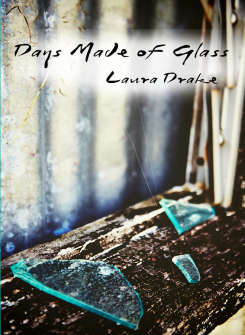 This is a question I’ve had since I began writing. See, I write in the ditch between Romance and Women’s Fiction. I didn’t set out to do that, my stories just come out that way. Half the editors who read my first book (and RITA winner *pause for a squee*) thought it was WF, half believed it was romance. I wrote it thinking it was WF. It sold as Romance, and with a few changes, it started me on the road to two contracts with two publishers, for a total of seven romances.
This is a question I’ve had since I began writing. See, I write in the ditch between Romance and Women’s Fiction. I didn’t set out to do that, my stories just come out that way. Half the editors who read my first book (and RITA winner *pause for a squee*) thought it was WF, half believed it was romance. I wrote it thinking it was WF. It sold as Romance, and with a few changes, it started me on the road to two contracts with two publishers, for a total of seven romances.
I just completed both of those contracts (whew!) and I didn’t have to think about what was next. See, I’ve had an idea for a book for years. You know, the one that keeps tapping your consciousness, saying, ‘I’m here. I’m waiting.’ I finally couldn’t resist any longer – see, this was my sister’s book. The baby sister I lost to cancer, twenty-six years ago. I wrote it in a blizzard of emotion, the story pouring out of me in ways that surprised me. The plot is not autobiographical in the least, but the underlying theme is (don’t you love when that happens?). When it was done, I felt it was a fitting tribute to the most important person in my life. I love this book.
But. I’d written it from the inside out; I hadn’t thought for a moment about the market. There is no romance in this book. Oh, the reader could foresee a future with the protagonist and her partner in the arena, but I give no hints of that on the pages. This is a sister story. I’ve steered out of the trench between Romance and WF for this one – it’s pure WF.
Will my readers follow me?
New York says no. They believe that the two genres, although they may have a small pour-over readership, are distinct and separate. And never the twain shall meet.
I’m not sure I agree. I think readers follow voice. Anyone who’s read any of my romances will recognize my voice in Days Made of Glass. It has deep seated issues and big conflict. (You don’t take Laura’s word for it, there’s an excerpt below! ASN)
I’m a reader too, and I’ve followed authors as they’ve crossed genres. Many I’ve stuck with, a few I haven’t. It depends – romance to pure suspense? I didn’t. But then, I don’t care much for the suspense genre (personal preference). Romance to WF or vice versa? I’m all over it. But then, I love both genres, so that’s no testimonial.
So I polled a few friends. Some would jump genres, some would not.
I took a completely informal poll on Facebook. The results surprised me – there were a few readers of romance and WF, who wouldn’t read the other. But they were outliers on the curve. The vast majority of the respondents said they’d read both. A caveat here (hey, I’m was a bean-counter in my career and I loved stats, okay?) these are MY followers only, and since historically I’ve written romance that leans toward WF, my FB followers may be more likely to be that type of reader.
I think it’s more about what you’re looking for in a read. Wanting to escape? Having lots of drama in your life? You may not want more – in that case, you may veer to romance. Looking to find someone worse off than you? (hey, don’t laugh, I’ve done it!), you may want WF.
So, readers, what do you think? Do readers cross the Romance/WF line? Do you?
Excerpt from Days Made of Glass:
A half mile down the road, she reached the yard, littered with fire trucks and police cars, strobes flashing. Leaping the ditch, she scrabbled through the weeds on the other side, her eyes locked on the flame-licked smoke pouring from the broken windows of the porch. Angel!
A yellow-coated fireman backed out the front door holding the handles of a stretcher. A limp, blanket-shrouded body came next, another firefighter hefting the trailing end. Harlie’s vision narrowed to a tunnel. She dropped the backpack as her legs buckled. She fell to her knees, fingers clenching the dusty soil. Her panicked brain took a second to process what she was seeing.
Too big.
Mack, then.
When her starved lungs hitched a breath, dizziness receded and the world righted.
Where is Angel? She leapt up and ran to where a fireman stood, shouting into a two-way radio. She snatched at his arm and he started.
“My sister.” She screamed up at him. “My sister’s in there!”
Arms grabbed her from behind and she twisted, fighting.
“She’s not!” His fingers dug into the flesh of her arms. “She’s okay. Calm down.”
Harlie stopped struggling and he let go. She whirled, chest heaving. “Where?”
The uniformed cop pointed to the side yard.
She dashed around the corner of the house. Angel, blanket-wrapped and clutching a dirty child, stepped out of the barn, led by a fireman. Sound, previously dulled by fear, surged to full volume. Water blasted the side of the house with a liquid roar. Men shouted. A lone siren wailed a warning in the distance, getting closer.
Angel’s gaze fastened on Harlie. Prying the sobbing child’s arms from her neck, Angel handed her to the fireman, then ran to launch herself into her sister’s arms.
Harlie was shorter than most of her classmates but at thirteen, Angel’s head still fit easily under her chin. The scent of smoke drifted off her sister’s hair — musty ash with the bite of alkaline, leaving a taste like spent adrenaline in Harlie’s mouth. She ran her hands over her sister’s bony back, still reeling from the gaping hole of a future without Angel.
Buy Days Made Of Glass here.
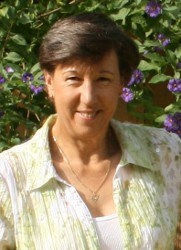 Laura Drake is a city girl who never grew out of her tomboy ways, or a serious cowboy crush. She writes both Women’s Fiction and Romance. In 2014, Laura realized a lifelong dream of becoming a Texan and is currently working on her accent. She gave up the corporate CFO gig to write full time. She’s a wife, grandmother, and motorcycle chick in the remaining waking hours. www.LauraDrakeBooks.com @PBRWriter
Laura Drake is a city girl who never grew out of her tomboy ways, or a serious cowboy crush. She writes both Women’s Fiction and Romance. In 2014, Laura realized a lifelong dream of becoming a Texan and is currently working on her accent. She gave up the corporate CFO gig to write full time. She’s a wife, grandmother, and motorcycle chick in the remaining waking hours. www.LauraDrakeBooks.com @PBRWriter








January 6, 2016
Guest Post: How Author Sharon Maas Navigated The Pathways Of Publishing
 Happy New Year! We’re kicking off 2016 with post by multi-published author Sharon Maass, about her publishing journey. Publishing nowadays looks different to everyone. It’s different for everyone. Even authors on the same path encounter different rough patches, different times of great ease (wait, I’m not sure those exist).
Happy New Year! We’re kicking off 2016 with post by multi-published author Sharon Maass, about her publishing journey. Publishing nowadays looks different to everyone. It’s different for everyone. Even authors on the same path encounter different rough patches, different times of great ease (wait, I’m not sure those exist).
Today, Sharon will share with us her own story. And hip-hip-hooray — it has a happy ending for Sharon that culminates with the release of her latest novel, THE SECRET LIFE OF WINNIE COX. (Here’s another secret: it’s $2.99 for Kindle and Kobo, and $3.99 for Nook!)
Please share your own journey, or any questions, in the comments.
Amy xo
How I Navigated The Pathways Of Publishing
by Sharon Maas
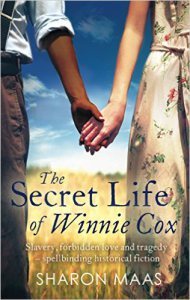 A new year, and new resolutions for those who make them. For many of us in the writing community, those who have perhaps fallen short of their goals, it might be a time of reconsidering their publishing options. Never have their been so many options… and never have the publishing pathways been so confusing. The digital age has opened doors previously closed, and I’m one of those who walked through. Now, more than a decade since I first started writing seriously, I’ve finally found my way.. Perhaps my story, a long process of trial and error, can help others to find their own way through the labyrinth.
A new year, and new resolutions for those who make them. For many of us in the writing community, those who have perhaps fallen short of their goals, it might be a time of reconsidering their publishing options. Never have their been so many options… and never have the publishing pathways been so confusing. The digital age has opened doors previously closed, and I’m one of those who walked through. Now, more than a decade since I first started writing seriously, I’ve finally found my way.. Perhaps my story, a long process of trial and error, can help others to find their own way through the labyrinth.
A bit about my background: I started my writing career as a journalist, way back in the late 60s. But I’ve always been a storyteller, writing adventure stories a la Enid Blyton when I was a child. The idea of writing a full length adult novel seemed far beyond my capacities, but one day I summoned the courage to try, and to my astonishment, it worked. I’ve written several novels now, but also full length works of non-fiction and memoirs. the latter are all unpublished as yet, so I will confine this account to adult novels. For the sake of brevity I’m assuming that you reading this already know the nuts and bolts of the pathways, so that I don’t need to go into detail describing either them or the history of publishing.
Trade, or Commercial Publishing, also known as Traditional Publishing:
When I finished my first novel in the late 90s, this was the only serious option open to most writers. I knew nothing about the publishing trade, and so I was delighted when a major UK agent took me on, and even more delighted when she made a deal for me with a major publisher: HarperCollins, London. That’s a long story I told recently on the Novelicious blog. It really was the writer’s dream come true, and I’ll never forget the elation I felt when I first walked through the HarperCollins gate at Fulham Palace Road, London. Then: Lunch with my agent and editor. Being told again and again from professionals in the industry: I loved your book! The launch party – that is, lunch with key people from the publisher and three major UK novelists who had blurbed my book. I’ll never forget publishing day, walking into Waterstones at the Hammersmith Underground station, seeing my book – Trade Paperback – face out on the shelf, watching to see if it would fly off the shelf, as some had predicted! ,( it didn’t).
There’s no doubt about it- being published by a Big Six ( now Big Five) publisher lends you a bit of je ne sais quoi. You feel in the thick of things, a part of an select club, and indeed you are: you have been selected, there’s a whole team of publishing professionals behind you rooting for your book, promoting it, talking about it. Your book is on Amazon and in the bookshops. You get TV and radio and newspaper interviews and reviews. Most of all, the advances! Though mine were decidedly not In the stratospheres, to me it was a small fortune, life changing, more than I had ever had in my account in my life. I felt rich, successful, on top of the world. I was that amazing thing: a Published Author! how could it not be an exciting time?
HarperCollins was great; I had the best editor in the world, and I wouldn’t change my time with them for anything. However. With my fourth novel I sailed into rough waters. Sales weren’t as good as we had all hoped, and I disagreed as to the way forward. I disregarded the advice my editor had given me– which was to keep on writing as I had started—and went off on a tangent.
Publishing success had gone to my head: I thought it was easy. It wasn’t. I wrote book after book of what I wanted, and faced rejection after rejection. After a decade of this I realised: my editor had been right. And now I was paying the price.
Self Publishing:
Ten years passed. Digital publishing entered the scene. The Kindle made its spectacular entry, and shook up the industry no end. If previously self- publishing had been almost synonymous with vanity publishing, and looked down upon, certain authors were making a killing doing just that. “Going Indie” was suddenly perfectly respectable, it’s authors full of glee: an author no longer had to be selected by an elite of gatekeepers! Digital was the dawn of a new era.
I was skeptical from the start. I just didn’t like the idea. I liked being taken care of by a publisher. The idea of full control– which seemed to be the biggest pro of self-publishing — didn’t appeal to me at all. I wasn’t a publisher, I was an storyteller – I wanted to write and nothing more. I wasn’t interested in the business end of things; I wanted to leave that to the publishing experts. Most of all, the prospect of promotion terrified me. I can think of no worse fate than going out into social media screaming Buy My Book! Yes, there are subtle ways of doing just that, but none of it appealed to me. I am an introverted soul and I don’t really like interacting with strangers. I would never make a good saleswoman. In
particular, not for a product I had made myself, something as personal as a novel. Initially I rejected the idea. But then I thought, I should at least make the already published novels, all three out of print by now, available in digital format. Just put them out there, I thought, and leave them to themselves. You can do it.
And so I began my research into self-publishing. It still wasn’t inviting, but by this time I had landed myself an agent for a non-fiction work; he was with a major US agency which had just opened a self-publishing department for those of their authors who wanted to go that route. This entailed help and support and advice along the way, in return for 15% of the profit. I would keep all the rights. I enquired and yes, they would take my first published novel Of Marriageable Age into the programme.
But: just as I was about to conclude negotiations with this agency, HarperCollins approached me with an offer to digitally publish all three of my out-of-print novels.
I was bowled over with excitement. I was being invited back into the big Six fold! How wonderful! Yet in the end I chose a third option.
Digital-first or Small Publisher:
Just as I was about to sign with HarperCollins for the digital rights to my first novel, a small, upstart publisher came into sight. This was Bookouture, a digital-first publisher barely a year old. I loved one of their books and so I approached the founder, Oliver Rhodes. He read the book and very soon I had an offer I couldn’t refuse: publication in just a few months, royalties more than double those offered by HarperCollins, and hands-on promotion. There would be a Print on Demand option alongside the digital edition. It was a risk: the publisher was new and had as yet no track record. But I liked what I saw and took the plunge.
Now, three of my books have been published by Bookouture—books I wrote during those ten years in the desert of rejection. All are selling satisfactorily. I’m just finishing the first draft of the next book, and more are to come. I’ve found the right path for me.
FIND OUT MORE ABOUT SHARON’S BOOKS! CLICK HERE!
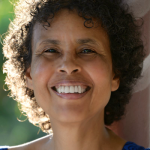 Sharon Maas was born in Georgetown, Guyana in 1951, and spent many childhood hours either curled up behind a novel or writing her own adventure stories. Sometimes she had adventures of her own, and found fifteen minutes of Guyanese fame for salvaging an old horse-drawn coach from a funeral parlor, fixing it up, painting it bright blue, and tearing around Georgetown with all her teenage friends. The coach ended up in a ditch, but thankfully neither teens nor horse were injured.
Sharon Maas was born in Georgetown, Guyana in 1951, and spent many childhood hours either curled up behind a novel or writing her own adventure stories. Sometimes she had adventures of her own, and found fifteen minutes of Guyanese fame for salvaging an old horse-drawn coach from a funeral parlor, fixing it up, painting it bright blue, and tearing around Georgetown with all her teenage friends. The coach ended up in a ditch, but thankfully neither teens nor horse were injured.
Boarding school in England tamed her somewhat; but after a few years as a reporter with the Guyana Graphic in Georgetown she plunged off to discover South America by the seat of her pants. She ended up in a Colombian jail, but that’s a story for another day. After travelling overland to India to live in an ashram. she returned to Europe, got married, and finally settled down. Today she lives and works in Germany.








December 31, 2015
Cheers and Beers and Plans for the New Year!

I’m not one of those authors who Tweets, Facebooks, or Instagrams every.single.review of my books. I see those social media outstretched hands from others and rarely click. I know authors with tens of thousands of social media followers and that doesn’t equate to book sales. I’d rather be my own charming self online, share news of the book, the occasional brag, book photos, maybe an industry review if I get one.
But to close out 2015, the year Women’s Fiction Writers was named one of Writer’s Digest’s 101 Best Websites for Writers, I thought I would share a review that made me smile because the reviewer is a reader and a writer therefore I got her review the way I don’t always get others. She mentions voice, something a writer understands, unlike the review I read today that had one word: Meh. I was amused, frankly, because there is obviously a reason some of us are writers and some of us are NOT WRITERS. But go ahead, use your cultivated vocabulary as you see fit. (Please note, I rarely read reviews on sites like Amazon or Goodreads because, well, you just shouldn’t.)
So here’s a link to a review that not only encourages you to read The Good Neighbor, but encourages you to drink beer while you do so — and for all the right reasons!
BOOKS AND BREWS by Mary Chris Escobar
As we head into 2016 I’m busy with freelance manuscript editing (yes, even today) and revising my third novel (yes, even tomorrow). I’ve also dipped back into essay writing, which I love, but don’t usually have time for. This piece, about finding a card from my ex after he died, was published on Your Tango in mid-December (the words are mine, the thighs in the photo, sadly, are not).
In the coming year, the blog will be home to more posts about writing, about the intricacies of women’s fiction, the politics of publishing. Want to contribute to the conversation with a guest post? Let me know and maybe it can work out! I’ll also conduct more author interviews with women’s fiction authors who are established, new, and new-to-you!
Keep reading and keep writing — and see you next year (why does that never get old?)!
Amy xo








December 7, 2015
What In The World Is Women’s Fiction?
 Round and round and round we go! Where we stop, nobody knows!
Round and round and round we go! Where we stop, nobody knows!
Yes, I’m rolling my eyes. Not because there’s a question (or a zillion) again as to what constitutes women’s fiction but because the term bothers some writers. Truly? Paris, San Bernadino, Syria, Trump—and THIS is what is getting under people’s skin?
Let’s get this straight. The term Women’s Fiction does not bother readers. Keep that in mind if you’re lamenting that your book falls somewhere under the WF umbrella. Readers don’t care what you call your book, just that they can find it. In a book store (if you remember those), it will likely be filed under — wait — hold onto to hats — FICTION. It will likely be filed ALPHABETICALLY. Online it may pop up under a myriad of bizarre topics including a few that make sense to you.
Authors, agents, and publishers use labels so that they can compare books to one another for the purpose of selling, marketing, advertising, promoting.
To me, women’s fiction is a book that focuses on a woman’s emotional journey. Now, you might say that romance does that. Noperoo. A romance novel’s central quest is the Happily Ever After. That’s the point of the story. It may include a strong thread or six of emotional journeys, but the purpose is the romance.
What’s the purpose of your main character? To find love — or to find a way to allow herself to have love? To meet a great guy — or to be okay enough with herself to meet a great guy?
I don’t mean these things are exclusive of one another, but if your POINT is to have your main character meet a love interest and that’s WHY she needs to fix her life, then I’m thinking it’s romance. If your POINT is that as a byproduct of her goal of fixing her life she just so happens to meet someone, but her goal is to be okay with or without someone — then to me, that would be women’s fiction.
There are also novels that focus on solving mysteries, running from bad guys, saving the world, etc. These might very well have elements found in WF. Genres overlap, friends. Lines blur.
Take note — women’s fiction also centers on friendships, family relationships, and sometimes doesn’t have a romantic interest at all, or it’s way on the back burner. And that is OKAY (usually, for some people/agents/editors and not for others).
I understand why the term “women’s fiction” bothers people. Because if a man writes a story about a family it’s a family drama. If a woman writes it’s women’s fiction or chick lit. But that doesn’t change the fact that my stories appeal to women and that I embrace the WF label because I just do. You do not have to.
Yeah, I know. There’s no “men’s fiction.” I don’t care. This is what I write, and I write knowing and loving that my stories appeal to women. I read widely — but this is what I write. Sometimes I’m made to feel as if I should feel badly about it. Like unless I pen a literary tome that it’s not enough. And it is.
Enough that is.
I do realize that “the others” (meaning non-writers) have no idea what women’s fiction means, nor should they. So if asked what I write I sometimes say family drama with humor, or book club type books, or stories about women and children. No reader wants you to say what you’d say at a pitch meeting.
Really, readers only care what the story’s about, not what you call it. That doesn’t make them run out to the bookstore, big box store, or tap their app to buy the ebook.
Stop worrying so much about what it’s called and just write a really good book. Find a kickass agent who sells to a great publisher. Or do it all yourself. Whatever floats your writer boat is what you should do and it should all lead to YOU writing a really good book.
Believe me, once you do, you’ll have plenty of other things to worry about.
Amy xo
PS THE GOOD NEIGHBOR makes a great holiday gift for your favorite neighbor! Fewer calories than that tin of cookies! Just sayin’…








December 6, 2015
A Jewish Mom’s Christmas Poem
November 30, 2015
Author Interview: NY Times Bestselling Kristina McMorris Crosses Continents and Decades In Her Latest Novel
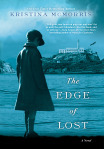 Wait ’til you hear about Kristina McMorris’s new book! I was so excited to interview Kristina because my questions about her book, her process, and what she thinks about writing and publishing were flowing! I had trouble keeping it to just a few. I always ask questions I want to know the answers to, figuring you might want to know too! Today, Kristina and I chat about hives, prison, and running out of ideas for books. I promise, you’ll love it!
Wait ’til you hear about Kristina McMorris’s new book! I was so excited to interview Kristina because my questions about her book, her process, and what she thinks about writing and publishing were flowing! I had trouble keeping it to just a few. I always ask questions I want to know the answers to, figuring you might want to know too! Today, Kristina and I chat about hives, prison, and running out of ideas for books. I promise, you’ll love it!
Please welcome Kristina to WFW—and don’t forget to watch the trailer (amazing) and consider adding THE EDGE OF LOST to your Christmas or Hanukkah—oh heck—just add it to your reading list!
Amy xo
Author Kristina McMorris Talks About THE EDGE OF LOST
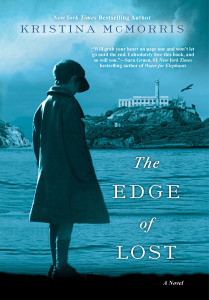 Amy: The Edge of Lost is a complex novel covering decades, going forward and then back in time. As someone who is a linear thinker and writer, I’m curious how planned and processed the timeline for this novel? How did you know which part of the story went where (how’s that for good English)? I’m using flashbacks for the first time in the novel I’m writing now, and I sort of break out in hives. Does this come naturally to you? (Not the hives.)
Amy: The Edge of Lost is a complex novel covering decades, going forward and then back in time. As someone who is a linear thinker and writer, I’m curious how planned and processed the timeline for this novel? How did you know which part of the story went where (how’s that for good English)? I’m using flashbacks for the first time in the novel I’m writing now, and I sort of break out in hives. Does this come naturally to you? (Not the hives.)
Kristina: For anyone who survives this crazy business, hive outbreaks are entirely justified! Thankfully, on this occasion, the timeline issue didn’t release an onslaught of anxiety for me, as was the case with my last novel. In The Pieces We Keep, I was constantly juggling a dual timeline with mystery threads that gradually wove together, making me feel like I was writing two books at once. Add in a pressing deadline, and it was enough to drive a writer to loads of wine, or chocolate. Or both.
When it came to writing The Edge of Lost, I knew from the start what the first chapter would entail. Like a movie playing in my mind, I saw a search taking place on a foggy night on Alcatraz Island, not for a prisoner on the run, but for the young missing daughter of a guard, whose whereabouts were known only by an inmate. Then the questions began: what events led to this scene? Who was the girl? How was the prisoner involved? With these thoughts swirling in my head, I pondered their backstories, and what came to me was the unexpected visual of an Irish immigrant ship headed for Ellis Island.
In short, what landed on the page is largely a reflection of how the story actually developed for me—beginning with a major turning point, then backing up to what led there, and continuing beyond that moment. As a movie buff, I personally love films structured this way (think Swordfish or Goodfellas) because they pull me in from the start and make it almost impossible to walk away.
Amy: I love that the spark for this novel came from a documentary. Did you jump on the idea right away or was it something you allowed to simmer for a while before you started writing?
Kristina: I wrote the opening scene soon after watching the documentary, “Children of Alcatraz.” But then I jumped into research for several months (interrupted by major house renovations that all began with a simple, “Let’s replace the countertops…”) before I actually sat down to write the dreaded synopsis. But all along, the story and characters had been evolving in my mind. So even though I finally wrote a long, detailed summary—my editor’s personal preference—I never looked at it again. In no small part, I admit, because I’m always certain it will read like a poorly translated foreign soap opera!
Amy: You’re the author of four novels and have contributed to two anthologies. Are you ever afraid you’re going to run out of ideas—or repeat something from another book—something as simple as a character name or something as complex as a plot line? I ask because there are things we are consistently fascinated with so therefore those drive our imagination.
Kristina: Well, I wasn’t afraid of it until NOW… thanks for that, Amy! Ha. (Oops, Kristina! I must stop thinking “out loud” when I type!!) You definitely bring up a great point. For character names, I’ve learned to keep a spreadsheet to avoid just that kind of problem. Each of my novels usually consists of about seventy characters—including bit parts and people merely mentioned by name—plus I often feature surprise cameos of a few characters from one novel in another book that shares the same time period and setting. (I cite these among the many reasons my brain is deteriorating at a rapid pace. In addition to my kids. I blame them too.)
As for plot lines in fiction, when it comes down to it, I think most are driven by a limited number of basic elements, such as love, guilt, survival, or estrangement. Not to mention secrets of a dark, hidden past. It’s the details and surrounding circumstances, along with fresh twists and an author’s unique voice, that make one story different from the last. Or at least I like to think so…
Amy: What was the most difficult or troubling thing you learned while writing The Edge of Lost? What was the most surprising or pleasing thing you learned?
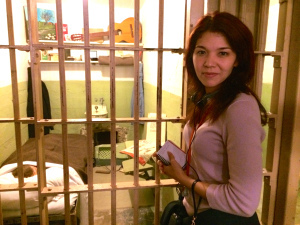 Kristina: My research for this novel covered more topics than my usual WWII stories, including immigrant life in Brooklyn, mobsters during Prohibition, vaudeville and burlesque circuits, and of course the notorious prison years on “The Rock.” Therefore, I was surprised on a daily basis by various true accounts.
Kristina: My research for this novel covered more topics than my usual WWII stories, including immigrant life in Brooklyn, mobsters during Prohibition, vaudeville and burlesque circuits, and of course the notorious prison years on “The Rock.” Therefore, I was surprised on a daily basis by various true accounts.
The ones I found most troubling would have to be the horrific conditions of the underground solitary confinement cells at Alcatraz, aptly dubbed the “dungeons,” as well as the “Rule of Silence,” which limited inmates to speak during very specified times—and even then in near whispers.
In contrast, the most amusing tidbits I gathered involved creative ways performers in American burlesque would evade stripping laws. For example, on many occasions the girls would briefly step behind the curtain every time they removed an article of clothing, so that technically they never stripped while on stage.
Amy: What’s your take on a happily ever after? Yes, no, maybe so?
Kristina: I would have to say that my favorite endings are “satisfying conclusions.”
Given the typical settings of my books, the characters who survive until the final page have experienced quite a bit of tragedy, so finding hope at the end is even more important than a happily ever after—especially since Ilike to think their imaginary lives would continue past the last page.
Amy: What’s your best advice, right now, in this publishing climate, for aspiring authors of women’s fiction or historical fiction?
Kristina: Remember that there’s no finish line in this business, so don’t lose sight of the joy found in simply writing a story you’re passionate about, regardless of trends or reviews or advice from others. When I first wrote my debut novel, inspired by my grandparents’ courtship letters, I was told repeatedly that WWII would never sell. Needless to say, I’m glad I didn’t listen.
Facebook: www.facebook.com/KristinaMcMorrisAuthor
Twitter: www.twitter.com/KrisMcmorris
GoodReads: www.goodreads.com/KristinaMcMorris
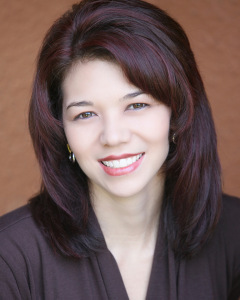 Kristina McMorris is a New York Times and USA Today bestselling author and the recipient of more than twenty national literary awards, as well as a nomination for the IMPAC Dublin Literary Award, RWA’s RITA® Award, and a Goodreads Choice Award for Best Historical Fiction. Inspired by true personal and historical accounts, her works of fiction have been published by Kensington Books, Penguin Random House, and HarperCollins.
Kristina McMorris is a New York Times and USA Today bestselling author and the recipient of more than twenty national literary awards, as well as a nomination for the IMPAC Dublin Literary Award, RWA’s RITA® Award, and a Goodreads Choice Award for Best Historical Fiction. Inspired by true personal and historical accounts, her works of fiction have been published by Kensington Books, Penguin Random House, and HarperCollins.
The Edge of Lost is her fourth novel, following the widely praised Letters from Home, Bridge of Scarlet Leaves, and The Pieces We Keep, as well as the anthologies A Winter Wonderland and Grand Central. Prior to her writing career, Kristina hosted weekly TV shows since age nine, including an Emmy®Award-winning program, and has been named one of Portland’s “40 Under 40” by The Business Journal. For more, visit: www.KristinaMcMorris.com








November 21, 2015
Writing Is An Uphill Battle (Thank Goodness)
I blame it on a lunch date. Or maybe I should say I owe it to a lunch date. Yes, my entire writing career is predicated on the fact that I met someone for lunch whom I’d never met before. I don’t remember his name, or what he looked like. I never saw him again.
Good thing you don’t pay royalties on inspiration.
During our pleasant midday conversation in an Irish pub, the first conversation since exchanging a few emails, my lunch companion mentioned that my email voice was “very well-suited to blogging.”
I thanked him.
Then, I went home and Yahoo-searched “blogging.” This was 2005, after all, and I unceremoniously entered the blogosphere.
After a few months of fervent blog reading and following and commenting, I started my own blog in early 2006. It had a polka-dot background and nary a reader. In my first-ever blog post I thanked Lunch Date Guy for setting me on a journey whose destination was unknown, and noted how that didn’t matter. What mattered was that I’d begun. I couldn’t have imagined where it would lead. Had someone told me, they’d have gotten a head slap.
I am big believer in momentum, that going downhill means you’re picking up speed and getting stronger, readying you for the climb.
My early blog where I wrote anonymously about being a single mom, dating, and life (like the main character in THE GOOD NEIGHBOR–coincidence?), led me to writing essays for photocopied ezines, and then for newspapers and online publications. My essays led me to attempt a memoir (because whose life isn’t worthy of 300 pages?), which led me to try fiction, which led to a book deal. Which led me to start a new blog about the kind of fiction I loved and was writing.
My full circle has a point. It doesn’t matter where or how you start. It doesn’t even matter WHERE you go. It just matters THAT you go, that you keep moving, that the momentum in your writing life mimic the momentum you admire or strive for.
Even as a brand new blogger in 2006, I always wrote, rewrote, and edited my blog posts. They became writing exercises, stretching muscles I’d not used in years. I read many blogs daily in those days before quick life updates on Facebook and Twitter, and dreamed about having comments on my posts. And I got them eventually, and a solid following of bloggers and blog-readers. Some of whom now read my novels.
I learned from my lunch date that we don’t find our inspiration, we choose it.
We choose to look up blogging and take a chance on something new. We choose to use our observations about the blue sky to write an essay or a poem. We choose to tell a story that makes us laugh because we want others to laugh. We choose to spend a year, or two, or six, writing a book. Maybe writers are compelled to write, but we choose to do it. How many people have you met who say they want to write a book? My answer is always the same. “You should.” And I mean it. If you want to write a book, you should write it. Without a degree, without classes, without feedback. You have to start going if you want to go somewhere, anywhere. (I’m not suggesting that this is a good idea forever, that craft isn’t important, that knowledge isn’t king (or queen)).
I don’t mean you can always decide what you want to write about but you can choose to embrace the inspiration that is presented to you, to cultivate the ideas that rattle around in your head, to embrace curiosity without hesitation, and to move forward despite uncertainty and fear.
And if you get lunch out of it, all the better.
Amy xo








November 18, 2015
The Difference Between Literary, Upmarket, & Commercial Fiction (an infographic not made by me)
I have no infographic skills, but Carly Watters does. Writers ask me all the time to explain genre differences, and I do. Carly does it better.
You’re welcome. (Now you can go thank Carly by clicking here.)
So tell me — is this what you thought? And if you’re being honest, where does your book fit (not where do you want it to fit — although maybe that’s a fair question as well, because then, go write it that way.)
Amy xo









November 12, 2015
Guest Post: Author Bette Lee Crosby Says “Write Where You Are.”
 We’ve all heard it before. Write what you know. I’m not sure that always means what we think (a post for another day) but today, USA Today bestselling author Bette Lee Crosby puts her own spin on things with Write Where You Are. She was unintentionally inspired to write her new book, What the Heart Remembers, Book Three in the Memory House Series during a trip to Paris.
We’ve all heard it before. Write what you know. I’m not sure that always means what we think (a post for another day) but today, USA Today bestselling author Bette Lee Crosby puts her own spin on things with Write Where You Are. She was unintentionally inspired to write her new book, What the Heart Remembers, Book Three in the Memory House Series during a trip to Paris.
How do you take advantage of where you are? And when was the last time you were unintentionally inspired?
Please welcome Bette Lee Crosby to WFW!
Amy xo
Write Where You Are
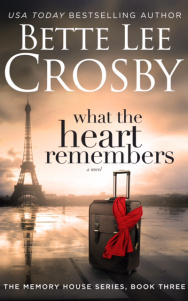 As a writer I tell everyone else’s story. I am the blind man in the subway, the eleven-year-old boy whose parents have been murdered, and the grandmother who is searching for her missing grandchildren. I am even a woman who can touch her hand to a forgotten object and find the memories that have been left behind. I am all of these people and none of these people. Those were their stories and when I told them I imagined myself living their lives in their worlds. Imagined. Only imagined.
As a writer I tell everyone else’s story. I am the blind man in the subway, the eleven-year-old boy whose parents have been murdered, and the grandmother who is searching for her missing grandchildren. I am even a woman who can touch her hand to a forgotten object and find the memories that have been left behind. I am all of these people and none of these people. Those were their stories and when I told them I imagined myself living their lives in their worlds. Imagined. Only imagined.
This year something changed. I suppose you could blame it on an atmospheric block that settled over Europe and turned the streets of Paris into blistering boulevards; but I believe it was a heavenly muse simply having a bit of fun.
This all began three years ago when my husband and I were traveling through Europe and spent four wonderful days in Paris. I fell in love with the city and promised myself I would come back. Of course I have also promised myself that I would join a gym, give up chocolate and stop reading until the wee hours of the morning. The Paris promise may have gone the way of those others had fellow author Patricia Sands not enticed me with her tale of home exchanges.
Following her lead, I offered our home in exchange for a place in Paris and voila! It happened. Through the home exchange we got a charming one-bedroom apartment in the center of Paris. The last time we were there I remembered it being quite chilly, so I wisely opted for the three weeks that ran from late June through mid-July. And just to be certain, I packed lots of long-sleeved tops, sweaters, a raincoat and of course, my laptop. Mind you, I had no intention of working. The computer was only so that I could occasionally check my mail or post pictures on Facebook.
The apartment, or flat as Parisians would say, was perfect. It had all the things I’d loved about Paris, including French doors that opened onto a small balcony overlooking Rue Pomme. The first week was exactly as expected, chilly in the mornings with a pleasant splash of sun in the afternoons. Day six the temperature zipped up to almost eighty and I thought, well now, isn’t this wonderful. Day seven the heat wave hit. By day nine it had soared to 104 degrees Fahrenheit.
Have I mentioned there is no air conditioning in Paris? In the winter it is freezing and even on the hottest days of August it is cool enough for a sweater in the morning. Except now it wasn’t. The late afternoons and evenings are when the heat was most oppressive, so we began spending lots of time at that lovely little flat. We would pull the French doors open and turn on the old-fashioned revolving fan to stir up a bit of a breeze.
There is so much to see and do in Paris, so we spent the cooler morning hours exploring the city and in the afternoons and evenings, I snapped open my laptop and wrote.
I began a novel set in Paris. It is the story of a girl who, like me, loves the museums and the cafes and the ironwork balconies. I wrote a love story about the things we did and the places we went. For the first time ever, I actually did live the life of my protagonist…and I loved every minute of it.
As writers we all too often squirrel ourselves away in a small office and explore the world only through the lives of our characters; this year I broadened my horizons. I’ve discovered that I don’t have to create imaginary worlds, there is one out there just waiting for me to step into it. Now, all I have to do is create the characters.
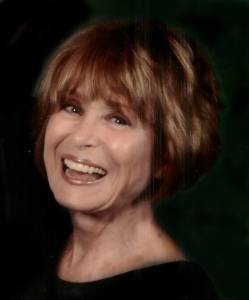 USA Today Bestselling Author and Award-winning novelist Bette Lee Crosby brings the wit and wisdom of her Southern Mama to works of fiction—the result is a delightful blend of humor, mystery and romance along with a cast of quirky charters who will steal your heart away.
USA Today Bestselling Author and Award-winning novelist Bette Lee Crosby brings the wit and wisdom of her Southern Mama to works of fiction—the result is a delightful blend of humor, mystery and romance along with a cast of quirky charters who will steal your heart away.
“Storytelling is in my blood,” Crosby laughingly admits, “My mom was not a writer, but she was a captivating storyteller, so I find myself using bits and pieces of her voice in most everything I write.”
Crosby’s work was first recognized in 2006 when she received The National League of American Pen Women Award for a then unpublished manuscript. Since then, she has gone on to win another twenty literary awards, including the Royal Palm Literary Award, The Reviewer’s Choice Award, the FPA President’s Book Award Gold Medal and the Reader’s Favorite International Book Award Gold Medal.
Her published novels to date are: Cracks in the Sidewalk (2009), Spare Change (2011), The Twelfth Child (2012), Cupid’s Christmas (2012), What Matters Most (2013), Jubilee’s Journey (2013), Previously Loved Treasures (2014), Blueberry Hill, A Sister’s Story (2014) Passing through Perfect (2015) and Memory House (2015). She also authored “Life in the Land of IS” a memoir of Lani Deauville, a woman the Guinness Book of Records lists as the world’s longest living quadriplegic.
You can find out more about Bette Lee Crosby, here:
Goodreads: http://www.goodreads.com/author/show/3222582.Bette_Lee_Crosby
Twitter: https://twitter.com/BetteLeeCrosby
Facebook: http://www.facebook.com/pages/Author-Bette-Lee-Crosby/284499021568642
You can find What The Heart Remembers (available for preorder) here:
Barnes & Noble – http://www.barnesandnoble.com/w/what-the-heart-remembers-bette-lee-crosby/1122872871?ean=2940151045094
iBooks – https://itunes.apple.com/us/book/what-the-heart-remembers/id1047698677?mt=11
Kobo – https://store.kobobooks.com/en-us/ebook/what-the-heart-remembers-1
Google Play – https://play.google.com/store/books/details/Bette_Lee_Crosby_What_the_Heart_Remembers?id=5fnTCgAAQBAJ








Women's Fiction Writers
- Amy Sue Nathan's profile
- 543 followers











